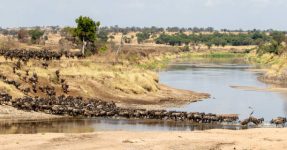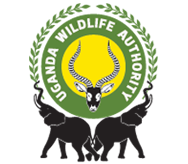Is Gorilla Trekking Dangerous? The question of whether gorilla trekking poses any danger often arises in the minds of travelers planning a safari. This activity is generally safe when participants adhere to the guidelines established by ranger guides. Most of the gorillas that trekkers aim to observe have undergone a habituation process, which typically lasts around two years in their natural habitat. The goal of this process is to acclimate the gorillas to human presence. While habituated gorillas tend to be less aggressive, it is important to remember that they remain wild animals, and travelers should take necessary precautions.

Safety Measures for Gorilla Trekking
To ensure a successful and safe gorilla trekking experience, travelers should observe several safety precautions, including the following:
- Adhere to the instructions provided by the rangers, who are knowledgeable about gorilla behavior in the wild.
- Maintain a distance of approximately 7 meters from the gorillas, even if they approach, and refrain from getting closer.
- Staying calm and minimizing unnecessary movements during the trek, as sudden movements and noise can startle the gorillas.
- Avoid flash photography, as the bright lights can frighten or provoke the animals.
- Not maintaining prolonged direct eye contact, as gorillas may interpret this as a challenge.
- Refrain from touching the mountain gorillas to prevent direct contact.
Potential Risks Encountered During Gorilla Trekking
While engaging in gorilla trekking, travelers may face certain risks, including:
Gorilla Charges: Silverbacks may charge at travelers, and in such instances, individuals should remain still and lower their heads. It is crucial to follow the instructions of the ranger guides during these situations.
Challenging Terrain: Gorilla trekking leads adventurers into dense, impenetrable forests situated in mountainous regions characterized by steep landscapes that present a significant challenge to travelers. This endeavor demands a high level of physical fitness, as it involves extensive hiking and navigating through muddy paths.
What Causes Gorillas to Become Aggressive?
When gorillas exhibit aggression during trekking, it can pose a danger to those tracking them. Several factors can trigger this behavior:
- A sense of threat or provocation, often caused by sudden movements, loud noises, or direct eye contact, which are perceived as threats to their community.
- The protective instincts of silverbacks, who defend their families, can lead to increased aggression when they feel their group is being approached.
- Competition for leadership within their groups, typically among silverbacks vying for dominance, can also result in aggressive behavior.
- A feeling of being trapped or cornered can provoke aggression, as gorillas may react defensively when they perceive no escape route.
How Do Gorillas Display Aggression in the Wild?
Aggressive gorillas can exhibit violent behavior, and some common signs of aggression include:
- Chest beating
- Charging towards perceived threats
- Roaring or grunting
- Throwing objects
- Biting and wrestling
What Should Travelers Do If Attacked by Gorillas?
In the event of an attack by gorillas, travelers should adhere to the following guidelines to minimize injury:
- Remain low and adopt a submissive posture to avoid escalating the situation.
- Avoid retaliating, as gorillas possess significantly greater strength than humans.
- Wait for the gorillas to calm down, as they typically only attack when severely provoked.
How do travelers perceive the safety of gorilla trekking?
To ensure a safe gorilla trekking experience, it is advisable for travelers to participate in the activity under the guidance of armed ranger guides. Additionally, travelers must adhere to the rules and regulations that are typically communicated to them.
Where can one participate in gorilla trekking during a safari?
Gorilla trekking is available in three African countries: Rwanda, Uganda, and the Democratic Republic of Congo. Notable destinations for this activity include:
Bwindi Impenetrable National Park – Uganda
Located in southwestern Uganda, this park is the largest protected habitat for mountain gorillas that travelers may encounter during their safaris. It is divided into four sectors: Rushaga, Nkuringo, Ruhija, and Buhoma. Each sector hosts several gorilla families that travelers can visit. This park also offers opportunities for gorilla habituation.
Bwindi is home to over 21 gorilla families available for tracking. To participate in gorilla tracking, travelers must obtain gorilla permits, which are official documents required for gorilla encounters. The cost of these permits is 800 USD for foreign non-residents, 700 USD for foreign residents, 500 USD for other African residents, and 300,000 UGX for East African residents.
Accommodation in Bwindi
The park features a variety of accommodation options both within and surrounding its boundaries. Some of these facilities include Rushaga Gorilla Camp, Nkuringo Lodge, Sanctuary Gorilla Lodge, Ride 4 a Woman Lodge, Buhoma Lodge, Four Gorilla Lodges, Bakiga Lodge, and many others.
Volcanoes National Park – Rwanda
Volcanoes National Park is located in northwestern Rwanda, at the intersection of Uganda, Rwanda, and the Democratic Republic of Congo, within the Virunga region. This protected area offers travelers the opportunity to participate in gorilla trekking. The park is home to approximately 12 gorilla families that can be tracked. The fees for gorilla trekking permits are set at 1,500 USD for foreign non-residents, 500 USD for foreign residents, and 200 USD for East African residents.
Accommodations for visitors engaging in gorilla trekking in Volcanoes National Park are plentiful. Notable lodging options include Bisate Gorilla Lodge, Sabyinyo Lodge, Sambora Lodge, Best View Hotel, among others.



















